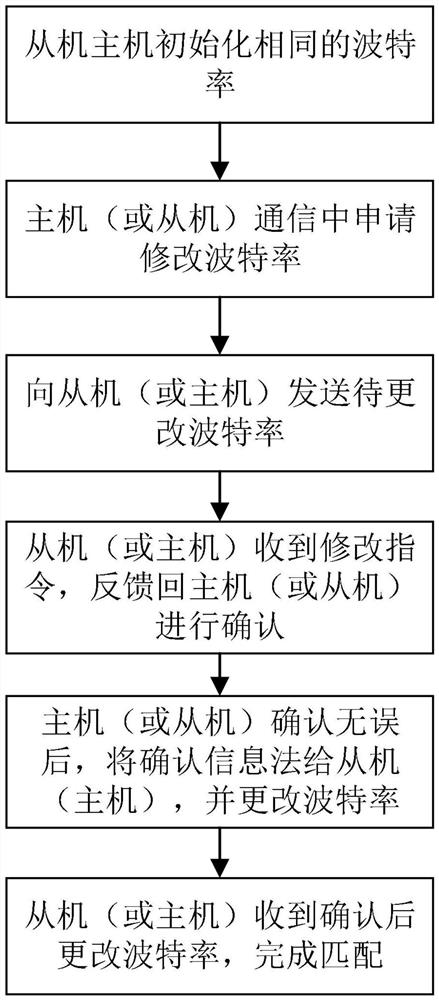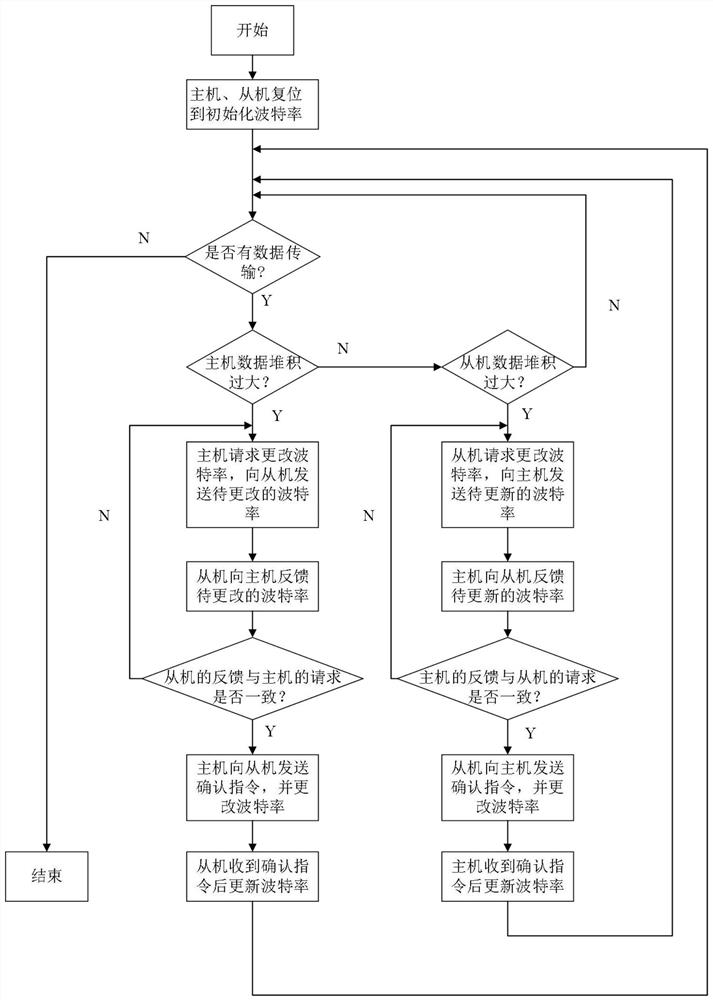Feedback type UART adaptive Baud rate system and adaptive Baud rate method
A baud rate, self-adaptive technology, applied in the direction of instrumentation, electrical digital data processing, etc., to achieve the effect of improving communication efficiency, saving storage space, and reducing power consumption
- Summary
- Abstract
- Description
- Claims
- Application Information
AI Technical Summary
Problems solved by technology
Method used
Image
Examples
specific Embodiment approach 1
[0047] The specific embodiment one, the UART adaptive baud rate system of the present embodiment feedback type, described system comprises:
[0048] The purpose of the present invention is to provide an adaptive matching method for a master or a slave to change the baud rate during UART communication. If the baud rate on the bus is changed, the master and slave can be quickly and easily matched.
[0049] To achieve the above object, the present invention requires receiving and sending modules respectively at the host and the slave, sharing a UART bus;
[0050]Host sending module, host receiving module, slave sending module, slave receiving module, the host and slave share a UART bus;
[0051] The master sending module is used to send the information to be sent to the receiving module of the slave. The master sending module includes the master reset interface and the data input interface (the data input interface here is the data generated by the upstream module of the master....
specific Embodiment approach 2
[0069] Embodiment 2: The difference between this embodiment and Embodiment 1 is that the UART is a Universal Asynchronous Receiver Transmitter, and the UART bus is used to transmit data, including idle bits, start bits, data bits, and stop bits.
[0070] Other steps and parameters are the same as those in Embodiment 1.
specific Embodiment approach 3
[0071] Embodiment 3: This embodiment is different from Embodiment 1 or Embodiment 2 in that: the FIFO is a first-in-first-out queue, which is used to store the binary data stream of the data input interface.
[0072] Other steps and parameters are the same as those in Embodiment 1 or Embodiment 2.
PUM
 Login to View More
Login to View More Abstract
Description
Claims
Application Information
 Login to View More
Login to View More - R&D
- Intellectual Property
- Life Sciences
- Materials
- Tech Scout
- Unparalleled Data Quality
- Higher Quality Content
- 60% Fewer Hallucinations
Browse by: Latest US Patents, China's latest patents, Technical Efficacy Thesaurus, Application Domain, Technology Topic, Popular Technical Reports.
© 2025 PatSnap. All rights reserved.Legal|Privacy policy|Modern Slavery Act Transparency Statement|Sitemap|About US| Contact US: help@patsnap.com



